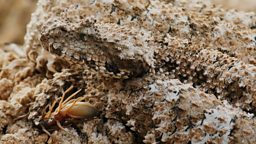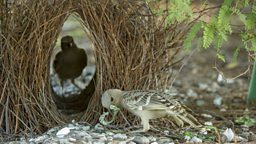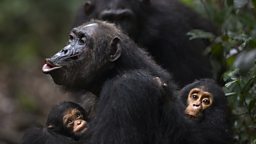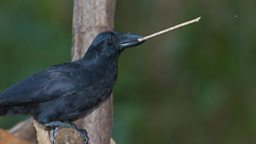Top five animal masterminds
We've picked out our top five animals that demonstrate some seriously clever behaviour, so without further ado, in reverse order we have...
5. The bee's knees when it comes to maths
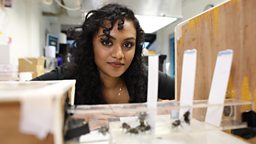
You may not expect an insect with a tiny brain to be a whizz at maths... but bumblebees CAN actually count from zero to five.
Bumblebees can actually count from zero to five.
Adding up is generally thought to require a high intelligence, so how is a bee’s tiny brain able to count the difference between one and three? They use their fingers of course! (Kind of…). Rather than having to understand numerical concepts, the bees use specific flight movements to scan an object, in a similar way to how we humans might look at a group of objects and count the quantity on our fingers.
The question is - why would bees need these mathematical skills? Well, they could be useful for navigation - counting the number of landmarks they pass as they fly from their nest to a field full of flowers and back again.
4. Master tool maker – a very clever corvid
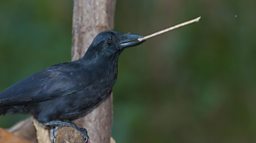
Of all the animal species that have been found to be smart enough to use tools in the wild – it's the New Caledonian crow that can be considered a true master toolmaker.
The New Caledonian crow that can be considered a true master toolmaker.
As one of the corvid family, the New Caledonian crow is famed for its intelligence. When presented with a puzzle box, like chess players, these crows can plan several steps ahead to secure a meal.
But what really sets them apart from other animals is that they are the only non-human species on the planet to make a hooked tool in the wild, a problem-solving ability that the majority of humans don't develop until we are at least eight years old. You see, these clever crows seek out forked plant stems, to bend and shape with their bill, transforming them into hooked tools perfect for fishing out one of their favourite meals from fallen trees – the juicy grubs of the longhorn beetle.
Genius!
3. Teacher's pet – the meerkat
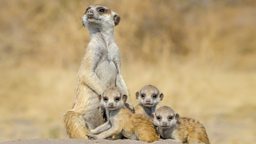
When you think about it, we humans go to school, perhaps to college and university where we are taught. But across the animal kingdom there are an elite group of teachers - and perhaps the most prolific educators of all are the meerkats.
The most prolific educators of all are the meerkats.
Within the arid landscape of South Africa's Kalahari Desert, finding food is no easy chore at the best of times. But the meerkat has a real taste for danger. Some of their favourite meals consist of scorpions, whose venomous sting is capable of killing an adult human. The scorpion's large pincers can inflict plenty of damage too, making them an extremely dangerous and difficult prey to catch for a young pup, that is until they attend scorpion school.
Adult meerkats start teaching pups at around four weeks old, with their lessons broken down into stages. They start with the basics - dead scorpions, which pose no threat, then with each subsequent lesson the stakes are raised. After the pups have mastered handling live prey that have had their pincers removed then they can finally graduate to the real thing.
Top marks!
2. Memory mastermind: the chimpanzee
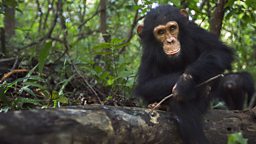
When it comes to short term photographic recall there is one memory mastermind that makes a monkey out of us, and that's the chimpanzee.
There is one memory mastermind that makes a monkey out of us, and that's the chimpanzee.
Scientists in Japan have been gaining insights into the workings of the chimp mind, and the limitations of our own. You see there is a game the chimps like to play where the numbers one to nine are randomly scattered on a computer touchscreen and then covered up. Astonishingly, in less than the blink of an eye, the chimps can remember the position of each number and then locate them again in the right order. It's a dazzling display that is almost impossible for us humans to accomplish.
Given that chimps share nearly ninety-nine percent of their DNA with us humans, why would their brains have evolved such vastly superior working memories? Well, one explanation could be that when competing for food against other hungry chimps in the wild they have to make very quick spatial decisions such as the exact positions of ripe fruit in a tree. There is a suggestion that early humans also had a photographic memory but we lost it to make room in our brain for other memory-related abilities such as language.
1. Who's a clever bird? The kea

So, who takes our top spot? Well, being called bird-brained isn't much of an insult when you're being compared to the highly intelligent New Zealand parrot, the kea, who has been hailed by some as the world's smartest bird after showing levels of problem solving intelligence comparable to primates.
The kea shows levels of problem solving intelligence comparable to primates.
Until now, the idea of being able to combine different types of reasoning together - what’s known as domain general intelligence - has been a dividing line between the brains of the great apes (including humans) - from every other single species on the planet.
But in tests involving food tokens, it has been discovered that the kea was in fact smart enough to combine physical as well as social information to make a judgment on where they thought a food token would be. This ability requires a whole suite of skills that you might not expect to see in a bird. It's a similar type of reasoning that humans use when playing games such as poker, where a player might not only be thinking about the cards that might be available and the probability that your opponent has those cards – but you also might be looking at their facial expressions and checking if you think that they might be bluffing. You are then combining these two sorts of information together to make a judgment on whether you should play your hand or not.
It just goes to show that you should never play poker with a parrot!
